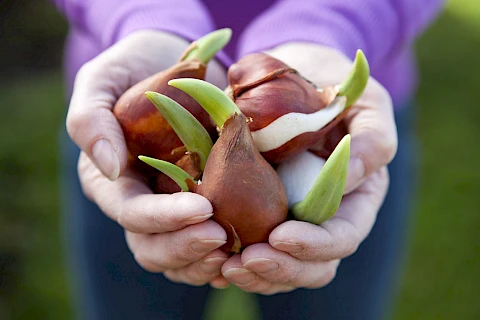
Gardening brings joy to many, especially seniors who take pride in their beautiful yards. As colder weather approaches, you need to know how to properly store bulb plants for winter to ensure they bloom again in spring. This guide will walk you through the steps needed to dig up and store your bulb plants safely.
Preparing for Digging Up Bulbs
Before you start digging up your bulbs, you need to choose the right time. In our region, the best time to do this is after the first frost but before the ground freezes completely. This ensures the bulbs have absorbed enough nutrients.
Make sure you have the right tools and materials on hand. You'll need:
- A garden fork or spade
- Gloves
- A bucket or basket
- Labels and a marker
Safety first! When digging, remember to bend your knees and use your legs to lift. This helps prevent back injuries. If you're unsure about your balance, consider using a small stool to sit on while you work.
Digging Up the Bulbs
To dig up your bulbs, carefully insert your garden fork or spade about six inches away from the base of the plant to avoid damaging the bulbs. Gently lift the soil and bulbs out of the ground. Shake off excess soil and place the bulbs in your bucket or basket. Look for healthy bulbs that are firm and free from mold or rot.
Cleaning and Drying Bulbs
Cleaning your bulbs is easy. Simply brush off any remaining soil with your hands. Avoid washing with water, as moisture can cause rot. Drying is an essential step before storage. Place your bulbs in a single layer on a newspaper or a screen in a well-ventilated area out of direct sunlight. Let them dry for a few days to a week. This process prevents mold and rot during storage.
Storing Bulbs for Winter
Bulbs need a cool, dark, and dry place to rest during the winter. Aim for a storage temperature between 35-50°F. Suitable storage containers include paper bags, mesh bags, or even old pantyhose. These allow air circulation, preventing moisture build-up. Avoid plastic bags as they can trap moisture. Label your containers with the type of bulbs and the date. This makes it easier to organize and identify them come springtime.
Replanting Bulbs in Spring
As winter ends, start checking your bulbs around March. By then, your bulbs should be ready to plant. Prepare your garden by tilling the soil and adding compost if needed. Plant the bulbs at a depth of two to three times their height and cover them with soil. Water them lightly after planting.
Additional Tips for Seniors
To protect your plants from pests, use organic repellents or companion planting techniques. This minimizes the need for harsh chemicals. Gardening can be physically demanding, so you need to take care of yourself. Use raised garden beds or container gardens to avoid bending over. Take frequent breaks to rest and hydrate. Choose lightweight tools that are easier on your joints.
Need Extra Help? We’re Here for You
Storing bulb plants for winter is a rewarding task that ensures a vibrant garden in the spring. By following these steps, you can protect and preserve your beloved plants with ease. Remember to enjoy the process and keep safe!
If you need any assistance or support with gardening or other daily activities, don't hesitate to contact Senior Helpers Wilmington. We're here to help seniors in New Hanover, Pender, Brunswick, and Wilmington enjoy their gardening passion safely.